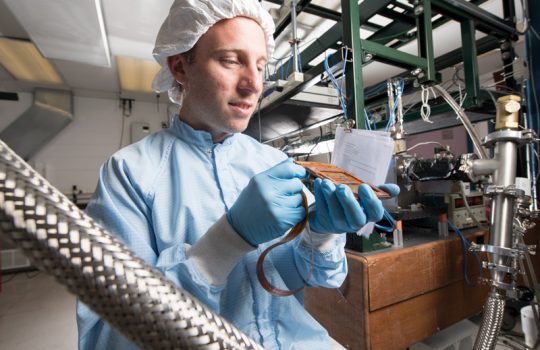Ultrapure copper for an ultrasensitive dark matter detector
To detect the rare and subtle interactions of dark matter with ordinary matter, the particle detectors for the SuperCDMS experiment must be cooled to temperatures near absolute zero and surrounded by ultrapure copper. From the mine all the way to deployment at SNOLAB, researchers are going to great lengths to ensure the purity of the copper.









